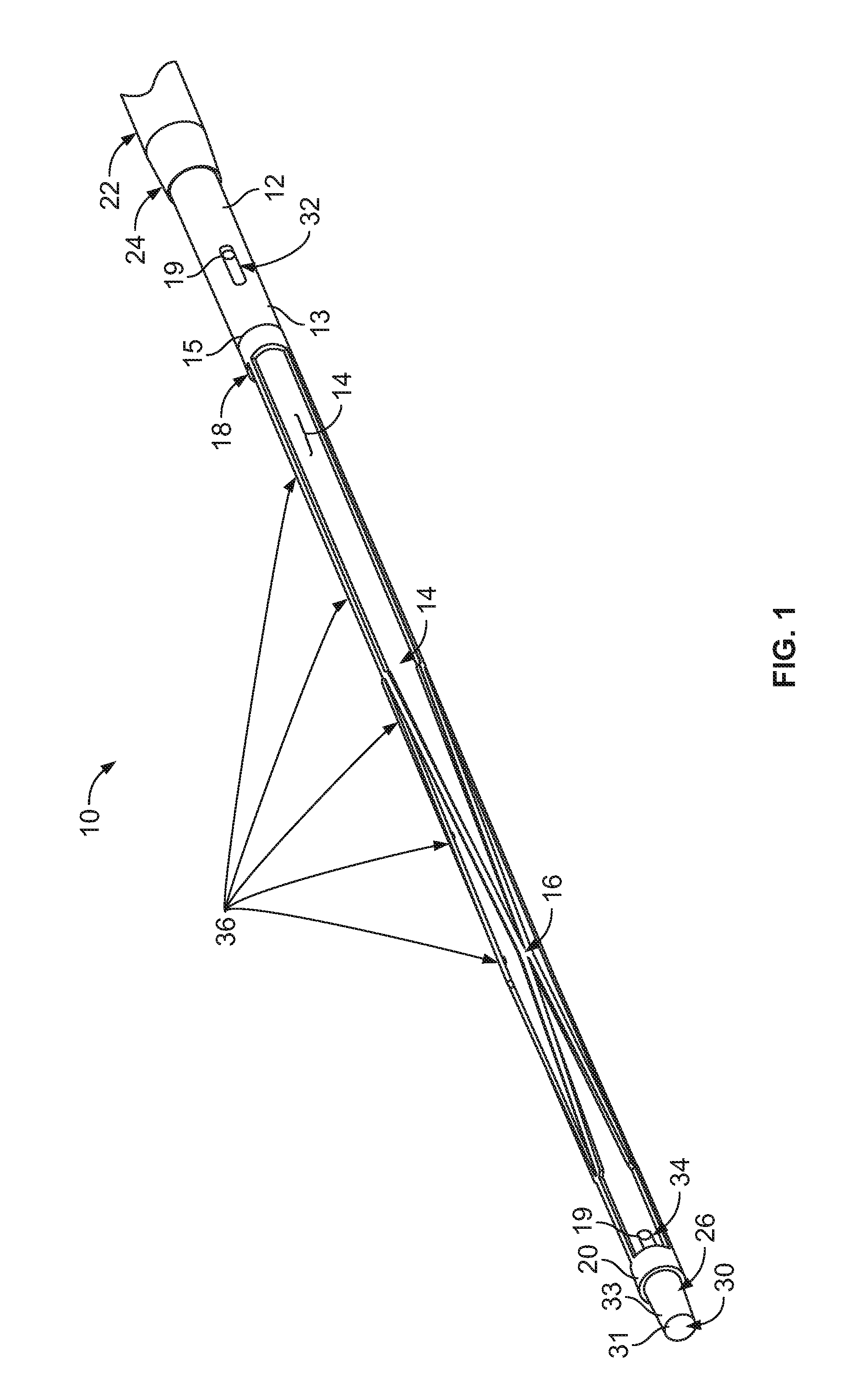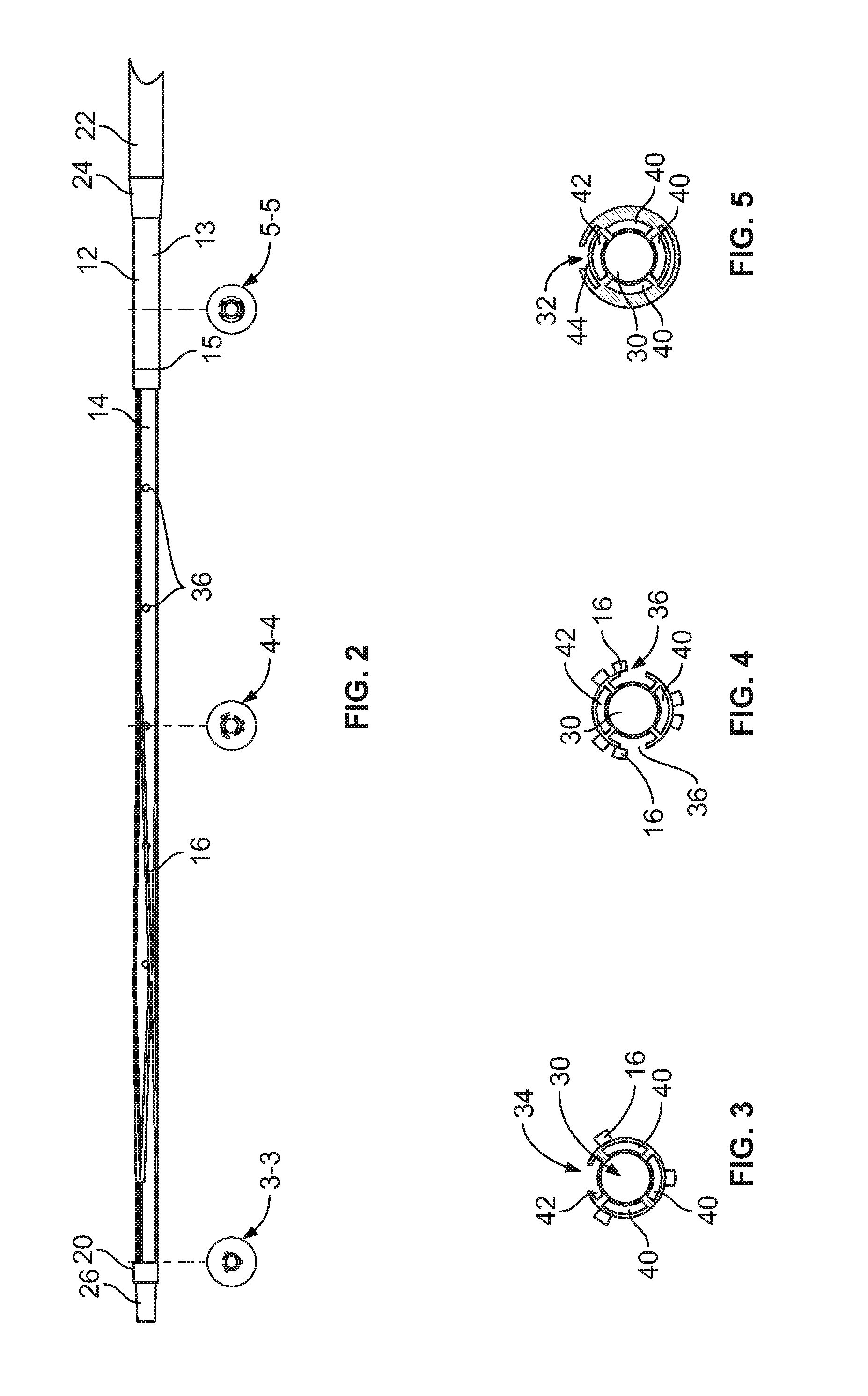Ivc filter catheter with imaging modality
a filter catheter and imaging modality technology, applied in the field of vascular filters, can solve the problems of extending the time period, affecting the accuracy of catheterization, so as to facilitate intravascular imaging, improve the condition of the filter member, and target specific and accurately.
- Summary
- Abstract
- Description
- Claims
- Application Information
AI Technical Summary
Benefits of technology
Problems solved by technology
Method used
Image
Examples
first embodiment
[0058]In the accompanying Figures like structural or functional elements are designated by like reference numerals, e.g., 16, 116, 216, 316, 416 represent similar structural or functional elements across different embodiments of the invention. With particular reference to FIGS. 1-5, according to the invention, there is disclosed a central venous access filter (“CVAF”) 10 that is composed generally of a multi-lumen central venous access catheter body 12 having a proximal port 32 associated with a first lumen 44 and a distal port 34 associated with a second lumen 42, a filter member 16, having a first end 18 and a second end 20, is positioned generally intermediate the distal port 34 and the proximal port 32 and is generally concentric relative to the catheter body 12. An outer sheath 22 is concentrically disposed over the catheter body 12 such that relative movement of the catheter body 12 and the outer sheath 22 either exposes the filter member 16 or captures the filter member 16 wi...
second embodiment
[0067]FIGS. 6-11 illustrate the CVAF 50. Unlike CVAF 10, CVAF 50 does not include the central guidewire lumen 30 of CVAF 10. Rather, while the general construct of CVAF 50 is similar to that of CVAF 10, a different configuration of the inner lumens is employed.
[0068]CVAF 50, like CVAF 10, consists generally of a multi-lumen central venous access catheter body 12 having a proximal port 32 associated with a first lumen 54 and a distal port 34 associated with a second lumen 58, a filter member 16, having a fixed first end 18 and a moveable second end 20, is positioned generally intermediate the distal port 34 and the proximal port 32 and is generally concentric relative to the catheter body 12. Use of the term “generally intermediate” is intended to mean that at least a substantial portion of the filter member 16 resides intermediate the distal port 34 and the proximal port 32. Thus, the filter member 16 may partially overlay either or both of the proximal port 32 or the distal port 34...
PUM
 Login to View More
Login to View More Abstract
Description
Claims
Application Information
 Login to View More
Login to View More - R&D
- Intellectual Property
- Life Sciences
- Materials
- Tech Scout
- Unparalleled Data Quality
- Higher Quality Content
- 60% Fewer Hallucinations
Browse by: Latest US Patents, China's latest patents, Technical Efficacy Thesaurus, Application Domain, Technology Topic, Popular Technical Reports.
© 2025 PatSnap. All rights reserved.Legal|Privacy policy|Modern Slavery Act Transparency Statement|Sitemap|About US| Contact US: help@patsnap.com



